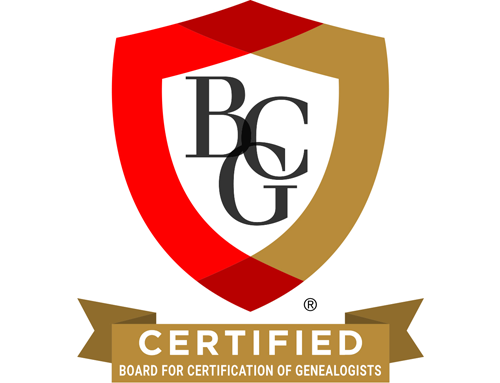SpringBoard is pleased to offer a review of this BCG Skillbuilding lecture, presented 5 May 2018.
S451, Yvette Hoitink, CG®, “Dear Me: Writing Research Reports to Yourself”
Reviewed by Stefani Evans, CG®
Yvette Hoitink of The Netherlands managed to capture and hold the attention of a crowded hall even though she lectured in an acquired language in the last time slot on the last day of the National Genealogical Society conference. She began with a vignette about discovering her first family scandal at the age of fifteen, which prompted her to begin making regular cross-country rail trips to her country’s National Archives. On one early trip a fellow researcher advised, “You need to be citing your sources. It will make you a better genealogist.” Hoitink then adopted his voice to urge her audience, “You need to be writing research reports. It will make you a better genealogist!”

Yvette Hoitink, CG®
Genealogists often start and stop their research—especially personal research—and return to it when they can. A comprehensive report encapsulates our research, incorporates our thinking, and offers an updated research plan that allows us to return—even years later—to an unsolved problem and efficiently prepare ourselves for the follow-up research. Following are some of the common-sense tips Hoitink offers to make reports effective for follow-up research:
- separate what the source says from your interpretation of what the information means;
- assign the source a reference number and place a copy with full citation and reference number in the report’s appendix;
- line through the suggestions for further research as you complete them, so you do not repeat your work;
- record negative searches so you know you conducted the search and do not repeat your work;
- include a source list, so you will know years later what sources you consulted and what you did not, and
- document open research questions.
Hoitink writes multiple reports for complex problems, noting it often takes several reports to reach a conclusion that meets the Genealogical Proof Standard. Reports should focus on one family or research question at a time, but can also be organized broadly by locality or research trip with subsections for each research question or nuclear family. Organizing multiple, single-focus reports into one long report keeps everything in one place, but Hoitink emphasizes ending the report before it shifts focus and saving older files before modifying them.
The informative syllabus explains a) when to write a research report; b) the elements, recommended order, and scope; and c) what to do after the report is complete. Hoitink offers her syllabus, slides, and sample report on the case study used in her lecture at her website, Dutch Genealogy (for personal use only). A link is in the syllabus and audio file. Genealogists of all experience levels will find in this lecture and syllabus (and the accompanying bonus materials) several ways they can improve their work by writing research reports.
A recording of this lecture may be ordered from Playback Now www.playbackngs.com.
The words Certified Genealogist and letters CG are registered certification marks, and the designations CGL and Certified Genealogical Lecturer are service marks of the Board for Certification of Genealogists®, used under license by board certificants after periodic evaluation.

